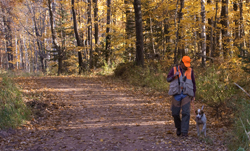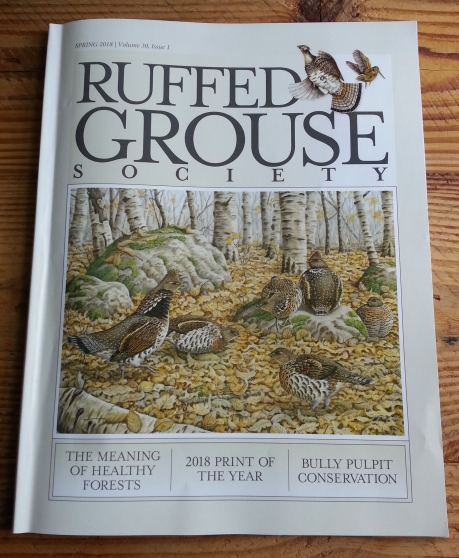Good piece about finishing dogs in RGS magazine
“To Break or Not To Break, That is the Question” is the intriguing title of a piece Tom Keer wrote for Ruffed Grouse Society magazine’s Spring 2018 issue.
Keer interviewed seven men with various backgrounds in training, trialing, guiding and handling bird dogs. Among them is Matt Soberg, RGS Director of Communications and editor of Ruffed Grouse Society magazine and Jerry. Included also are photographs of two English setters we bred, Northwoods Carly Simon and Northwoods Guns N’ Roses, and long-time client Jim DePolo.
Our bird dog background is wild bird field trial competition where dogs must be steady to wing and shot. Major differences exist between dogs trained for those championship-level performances and hunting dogs. For our guiding work now, we allow our dogs to release after the shot.
Keer lets Jerry explain our philosophy and some of the differences.
“As a hunting guide, I want my dogs to consistently do three things: find birds, point them right and at a distance close enough to present as good an opportunity as possible for a kill shot.
“I like dogs to be bold and savvy to follow the bird until it is pinned…I allow my dogs to reposition until they have the grouse pinned. My clientele is comprised of serious grouse hunters who spent a tremendous amount of time in the woods. I can’t think of one owner of our dogs that fully breaks his setter or pointer. My dogs all release after the shot.
“I think field trailers prefer fully broke dogs for one reason. Their dogs can’t make errors around game. What counts is the find, so birds must be pointed correctly. If the bird is pointed but flushes wild, it’s still counted as a find. But to a hunter, pointed birds that flush may be out of range and not provide a good shot. Grouse trial dogs aren’t required to retrieve dead birds, but in hunting, getting to a crippled bird fast can make the difference between finding it or not. That is where breaking at shot can give the dog an advantage.”





